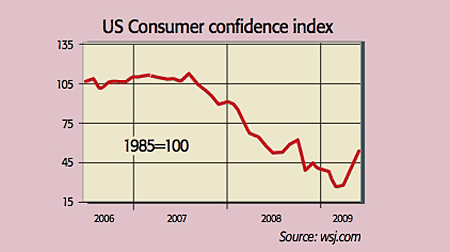
Stockmarkets cheered on Tuesday as the US consumer confidence index soared to an eight-month high of 55 in May from 41 in April. It was the biggest monthly increase since early 2003. But on the housing front the news was grim. The Case-Shiller index revealed that house prices fell by 19% year-on-year in the first quarter, with the monthly pace of decline picking up to 2.2% in March. Prices are now 32% down from their 2006 peak.
What the commentators said
With prices back to 2002 levels, “most of the boom in housing has now been reversed” and housing is “undervalued”, said Paul Dales of Capital Economics. Judging by the ratio of house prices to disposable incomes per head, it is 18% below the long-term average. But that doesn’t mean prices can’t fall further. After being overvalued for a long time, asset prices tend to fall “significantly below” fair value.
The day when house prices start rising still looks “far away”, agreed The Wall Street Journal. The main problem is the “dizzying supply of housing”, which “can keep a lid on house prices” even if demand rises: at the current pace of sales, inventories are at ten months’ supply, compared to the historical average of six. And that’s not counting homes foreclosed on by banks that haven’t been put up for sale yet.
With foreclosures hitting new records as the economy deteriorates, supply is unlikely to fall significantly soon. One in eight households is now either in arrears or in the delinquency process, noted David Rosenberg of Gluskin Sheff. On the demand side, tight credit continues to hamper the market, noted Gary Thayer of Wells Fargo.
While the housing picture is still “unequivocally negative”, the bounce in consumer confidence is nothing to get excited about, said Lex in the FT. The reading of 55 is still “woefully low” and corresponds to a “level of consumption that barely moves the economic needle”. Quite, said Ian Shepherdson of High Frequency Economics. As house prices slide and destroy consumers’ wealth, the “collateral base” of the household sector is “evaporating”, so spending will be “very weak for the foreseeable future”.
Households are no longer able to borrow against rising house prices to fuel spending. They also face rapidly-dwindling earnings growth as the economy continues to slide, and “unsustainable” levels of debt, as David Roche of Independent Strategy pointed out, so they have to rebuild their depleted savings. “The bottom line”, said Standard Chartered, is that the US consumer “will not be able to carry the world economy” for a long time.